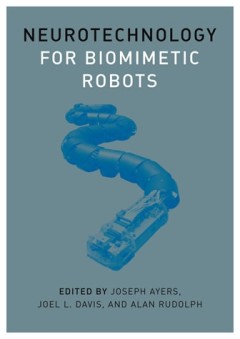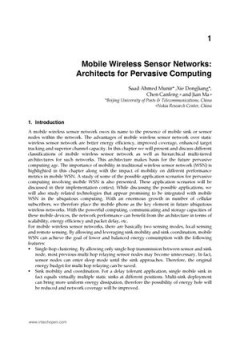Filter by

Quantified :biosensing technologies in everyday life
Today anyone can purchase technology that can track, quantify, and measure the body and its environment. Wearable or portable sensors detect heart rates, glucose levels, steps taken, water quality, genomes, and microbiomes, and turn them into electronic data. Is this phenomenon empowering, or a new form of social control? Who volunteers to enumerate bodily experiences, and who is forced to do s…
- Edition
- -
- ISBN/ISSN
- 9780262334549
- Collation
- 1 online resource (xxxi, 243 pages) :illustrations
- Series Title
- -
- Call Number
- -

Neurotechnology for biomimetic robots
"A Bradford book."An overview of neurotechnology, the engineering of robots based on animals and animal behavior.The goal of neurotechnology is to confer the performance advantages of animal systems on robotic machines. Biomimetic robots differ from traditional robots in that they are agile, relatively cheap, and able to deal with real-world environments. The engineering of these robots require…
- Edition
- -
- ISBN/ISSN
- 9780262267496
- Collation
- 1 online resource (xiv, 636 pages) :illustrations
- Series Title
- -
- Call Number
- -
Humidity Sensors, Major Types and Applications
- Edition
- -
- ISBN/ISSN
- 978-1-83968-565-1
- Collation
- -
- Series Title
- -
- Call Number
- -

Stepped-Frequency Radar Sensors
Stepped-frequency radar sensors are attractive for various surface and subsurface sensing applications. Stepped-frequency systems transmit consecutive trains of continuous-wave signals at different frequencies that are separated by a fixed amount. The unique characteristic of stepped-frequency systems is, although they work as frequency-based systems, their final response is described in a …
- Edition
- -
- ISBN/ISSN
- 978-3-319-12271-7
- Collation
- -
- Series Title
- -
- Call Number
- -

Handbook of Optical and Laser Scanning
From its initial publication titled Laser Beam Scanning in 1985 to Handbook of Optical and Laser Scanning, now in its second edition, this reference has kept professionals and students at the forefront of optical scanning technology. Carefully and meticulously updated in each iteration, the book continues to be the most comprehensive scanning resource on the market. It examines the breadth and …
- Edition
- -
- ISBN/ISSN
- 9781439808801
- Collation
- -
- Series Title
- -
- Call Number
- -

Mobile Wireless Sensor Networks
Mobile Wireless Sensor Networks: Architects for Pervasive Computing
- Edition
- -
- ISBN/ISSN
- 9789533073255
- Collation
- -
- Series Title
- -
- Call Number
- -
 Computer Science, Information & General Works
Computer Science, Information & General Works  Philosophy & Psychology
Philosophy & Psychology  Religion
Religion  Social Sciences
Social Sciences  Language
Language  Pure Science
Pure Science  Applied Sciences
Applied Sciences  Art & Recreation
Art & Recreation  Literature
Literature  History & Geography
History & Geography